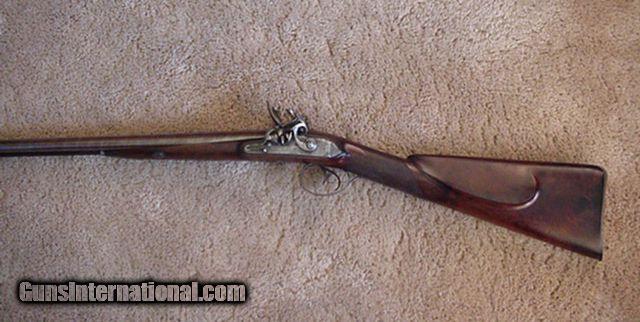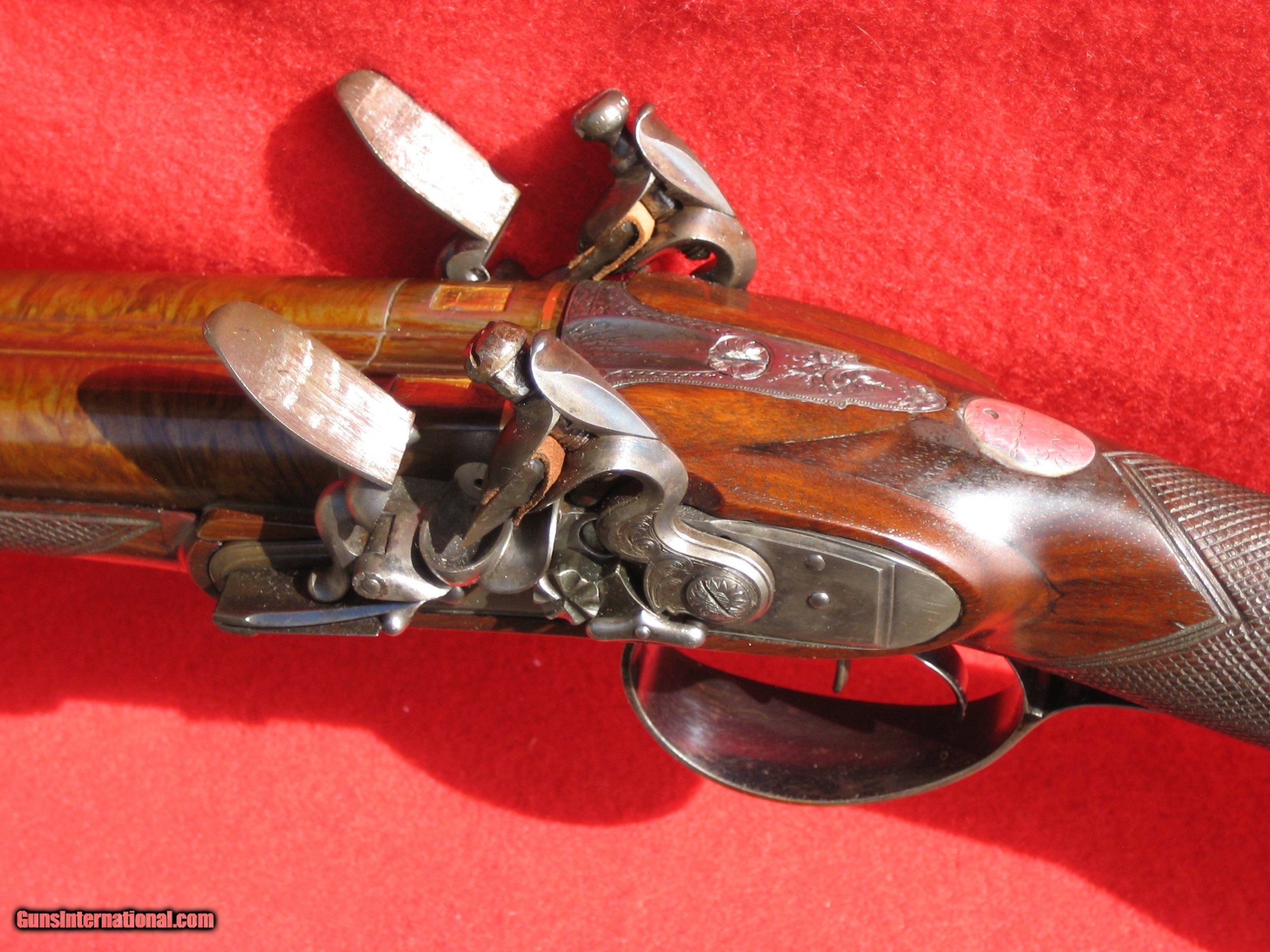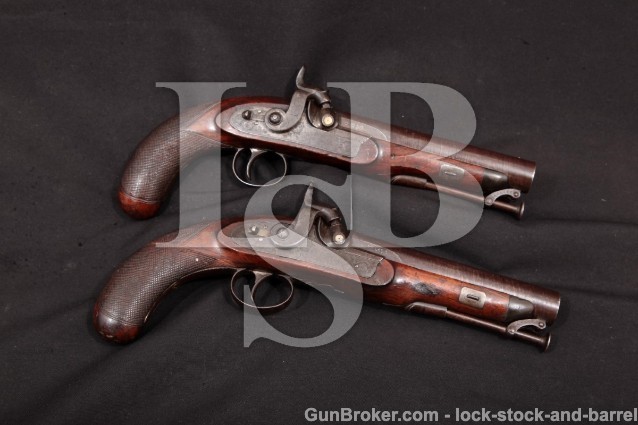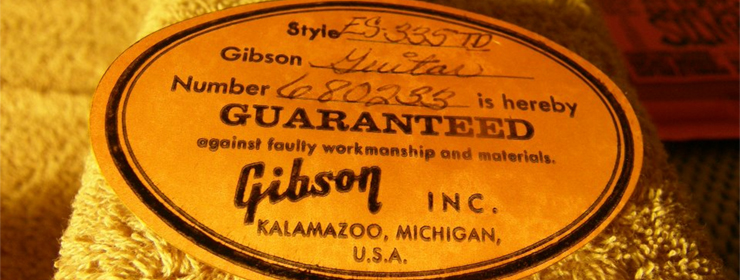
- London, England
- Wood, platinum, steel, silver, brass, textile and paper
- Pistols are 38 cm / 15 in each
Provenance:


Description: Description Update: No serial number.75 cal, 29 1/2' rifled barrels with bright, otherwise excellent bores, were it not for two areas of pitting in each for about 2' near the muzzles, mostly light but a couple spots which could be characterized as moderate. In 1805 James finished his apprenticeship at Hutchinson and subsequently earned a position with Joseph Manton of Oxford Street. Manton was hailed as “The greatest artist in firearms that ever the world produced” by the illustrious marksman, Colonel Peter Hawker. After three years at Manton, James had risen to Head Stocker. It’s a high quality percussion gun signed Joseph Manton on locks and barrel and with the serial number 5692 on the underside of the barrels, the breech block, the. Lot 1112 is a flintlock pistol made by Joseph Manton. Given the serial number, Manton made the gun circa 1802, making it a rather late flintlock but still well before the introduction of the tubelock. A hooked and patent breech allows for more efficient ignition of the. Also has London- Fine Twist and is a very well made gun with serial number 50 on the action and bbls.Early gun with 11 ga bbls and cyl/cyl Posted by: George L. Manton - 05/29/09 06:46 PM.
Private Collection, United Kingdom
Private Collection, USA
Marked with a platinum-lined maker’s stamp
Literature: D.H.L. Back, TheMantons1782-1878, Norwich 1993, pp. 76, 108. W. Keith Neal & D.H.L. Back, TheMantonSupplement, Tisbury 1978, p. 246. P.A. Scott-Edeson, ‘Dating the Firearms of Joseph Manton: 1792-1825’, in CanadianJournalofArmsCollecting, Vol. 38, No. 3 (August, 2000), p.76
Joseph Manton Shotgun
This pair of pistols is recorded in the three most significant studies of Joseph Manton’s firearms, listed above.
A near-identical pair in their case, No. 6255 for 1814, is illustrated in Neal & Back 1967, colour plate 6 (opposite p. 224). The configuration of the case and the type of trade label in the lid are identical also. The label is in fact Joseph Manton’s third type, introduced in 1812 to reflect his patent No. 3558 for ‘Inverted Breeches and Gravitating Stops’.
The numbers which are engraved on the backs of the steels are from the serial numbering sequence of the externally contracted lock engraver, most probably William Leykauss. Leykauss engraved locks for nearly all of the leading London gunmakers of the period, a fact he attested to in the evidence he gave in the legal proceedings of Manton v. Parker, 6th July 1814: see Neal & Back 1978, pp.139-142. For a tabulation of the numbering of the steels of Joseph Manton’s flintlock firearms see Back 1993, pp. 75-6.

Joseph Manton (1766-1835) was the younger brother of the renowned gunmaker John Manton. In the course of his apprenticeship Joseph had been turned over to his brother in about 1784, serving the remainder of his apprenticeship for probably another four years. Thereafter Joseph worked initially for John before setting up on his own in Davies Street, Berkley Square, in the summer of 1791 and commencing business in the following year.

Joseph Manton Shotgun For Sale
These pistols have scratch rifled browned twist octagonal sighted barrels, forged by Charles Lancaster, with case-hardened recessed patent breeches, each with platinum line and touch-hole, and with platinum lined maker’s stamp. The engraved case-hardened tangs each incorporate the back-sight. The signed engraved case-hardened detented locks each have a safety-catch and rainproof pan, and the steels are each engraved ‘Joseph Manton Patent’ and numbered respectively 8028 and 8029. The figured walnut half-stocks have chequered butts, fitted with engraved blued iron mounts including, serial numbered (6255) trigger-guards, silver escutcheons, and blued trigger-plates each with pineapple finial. This pistols have horn fore-end caps and original horn-tipped ramrods, and sit in their original lined and fitted serial numbered mahogany case with accessories including associated four-way flask covered in red leather. The lid shows a trade label for 1819-20 and is fitted on the outside with flush fitting carrying handle and circular escutcheon.